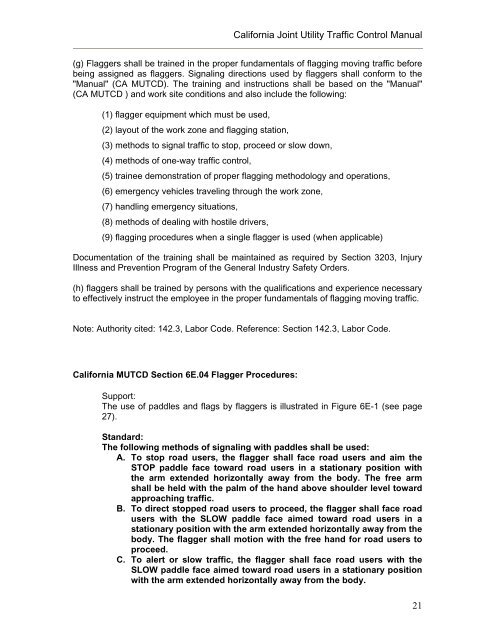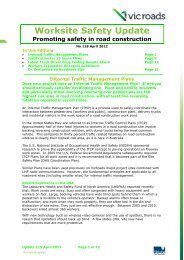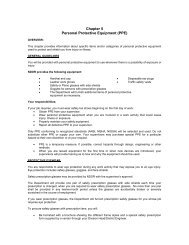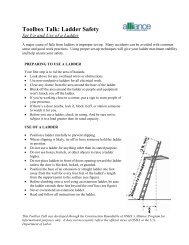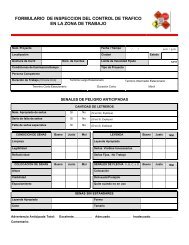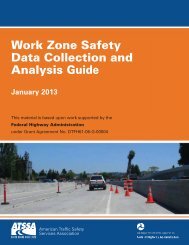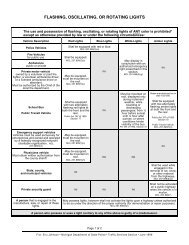California Joint Utility Traffic Control Manual - National Work Zone ...
California Joint Utility Traffic Control Manual - National Work Zone ...
California Joint Utility Traffic Control Manual - National Work Zone ...
Create successful ePaper yourself
Turn your PDF publications into a flip-book with our unique Google optimized e-Paper software.
<strong>California</strong> <strong>Joint</strong> <strong>Utility</strong> <strong>Traffic</strong> <strong>Control</strong> <strong>Manual</strong><br />
(g) Flaggers shall be trained in the proper fundamentals of flagging moving traffic before<br />
being assigned as flaggers. Signaling directions used by flaggers shall conform to the<br />
"<strong>Manual</strong>" (CA MUTCD). The training and instructions shall be based on the "<strong>Manual</strong>"<br />
(CA MUTCD ) and work site conditions and also include the following:<br />
(1) flagger equipment which must be used,<br />
(2) layout of the work zone and flagging station,<br />
(3) methods to signal traffic to stop, proceed or slow down,<br />
(4) methods of one-way traffic control,<br />
(5) trainee demonstration of proper flagging methodology and operations,<br />
(6) emergency vehicles traveling through the work zone,<br />
(7) handling emergency situations,<br />
(8) methods of dealing with hostile drivers,<br />
(9) flagging procedures when a single flagger is used (when applicable)<br />
Documentation of the training shall be maintained as required by Section 3203, Injury<br />
Illness and Prevention Program of the General Industry Safety Orders.<br />
(h) flaggers shall be trained by persons with the qualifications and experience necessary<br />
to effectively instruct the employee in the proper fundamentals of flagging moving traffic.<br />
Note: Authority cited: 142.3, Labor Code. Reference: Section 142.3, Labor Code.<br />
<strong>California</strong> MUTCD Section 6E.04 Flagger Procedures:<br />
Support:<br />
The use of paddles and flags by flaggers is illustrated in Figure 6E-1 (see page<br />
27).<br />
Standard:<br />
The following methods of signaling with paddles shall be used:<br />
A. To stop road users, the flagger shall face road users and aim the<br />
STOP paddle face toward road users in a stationary position with<br />
the arm extended horizontally away from the body. The free arm<br />
shall be held with the palm of the hand above shoulder level toward<br />
approaching traffic.<br />
B. To direct stopped road users to proceed, the flagger shall face road<br />
users with the SLOW paddle face aimed toward road users in a<br />
stationary position with the arm extended horizontally away from the<br />
body. The flagger shall motion with the free hand for road users to<br />
proceed.<br />
C. To alert or slow traffic, the flagger shall face road users with the<br />
SLOW paddle face aimed toward road users in a stationary position<br />
with the arm extended horizontally away from the body.<br />
21


